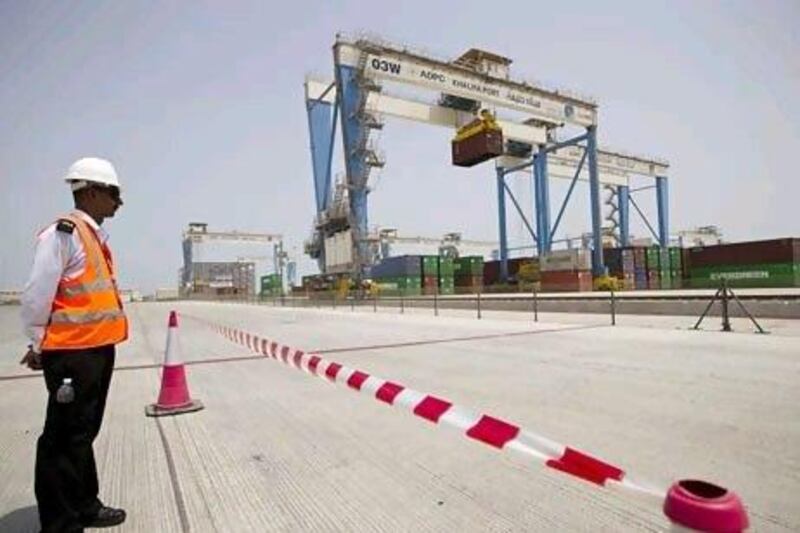Khalifa Port in Abu Dhabi welcomed its first commercial container ship yesterday, the largest ever to dock in the emirate's waters.
Dynamic Evergreen, a Taiwanese-owned 294-metre vessel, sailed into the new port at 8am. Giant cranes, the largest ship-to-shore cranes in the world, then unloaded the containers, crammed with everything from food to electrical spare parts.
The operation was a trial run ahead of the official opening of the port in Taweelah on September 1.
But staff at Abu Dhabi Ports Company (ADPC) were still excited.
"It's industrial art," said Tony Douglas, the chief executive of ADPC, as he stared out across the 2.7 square kilometre expanse of phase one of the development.
Five years ago the same stretch of land was submerged under the Arabian Gulf. Work began reclaiming the site and dredging to a depth of 18 metres in January 2008.
It was only this year that the deepwater terminal began taking shape.
"For the last two months we've been doing 1,800 tests a day. Today is a milestone as it's the first time we've tested every single part of the port process end to end," he said.
Once open, Khalifa will become the new main marine terminal in Abu Dhabi, taking over from Port Zayed, which last week celebrated its 40th anniversary.
"Khalifa Port is the future of Abu Dhabi ports for the next 40 years," said Mr Douglas.
Phase one is designed to give a capacity capable of handling 2.5 million containers a year, a figure that could rise to 15 million by 2030 under further phases. Initially, the port will hold about 800,000 containers, the same number as Port Zayed.
But the difference between the two terminals could not be greater.
A ship of Dynamic Evergreen's scale could not have been handled at Port Zayed.
The smaller size of the port would mean only half of the cargo could be unloaded at one time. The ship would then have to have been turned around for the other half to be unloaded. Khalifa Port is designed to handle the giants of the waves.
Its six Super Post Panamax cranes have a lifting height of 44 metres and a weight capacity of 110 tonnes.
Port Khalifa is also the first fully automated dockyard in the Middle East and North Africa.
Gone are the armies of workers required to help manoeuvre containers from ship to supplier. Instead, the automated cranes lift the cargo on to rails, where 30-metre-high vehicles known as straddle carriers move the containers into position ready for waiting lorries.
Workers manage the process from a nearby control room.
The mountains of paperwork required by hauliers for customs in Port Zayed are also not required. Radio frequency identity tags on containers and lorries coming in and out of the port and online registering of shipments make the customs process far speedier.





